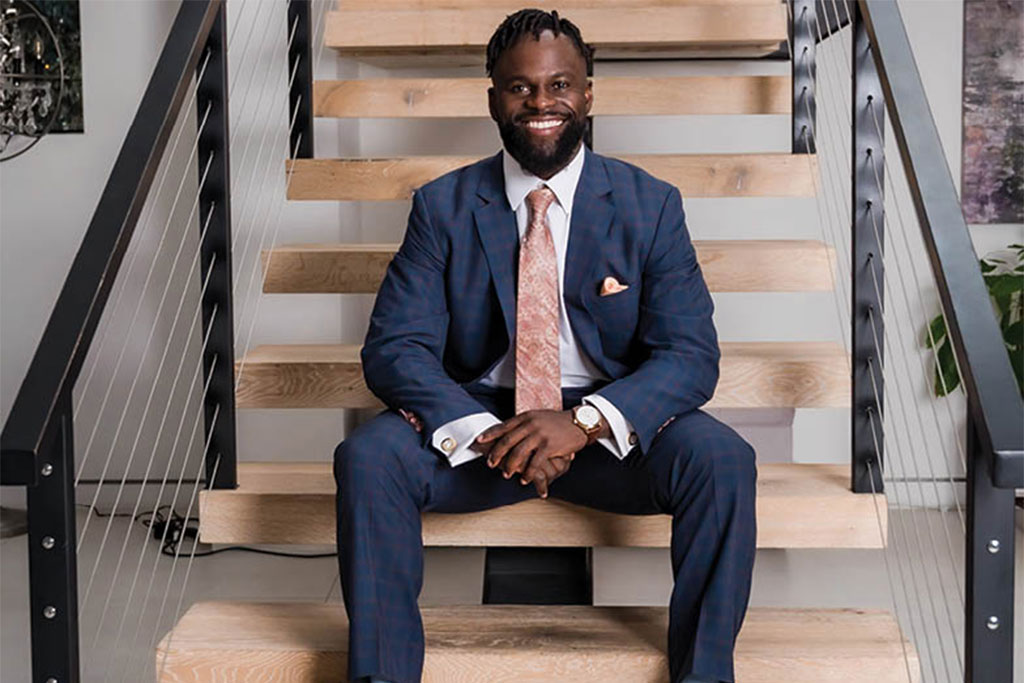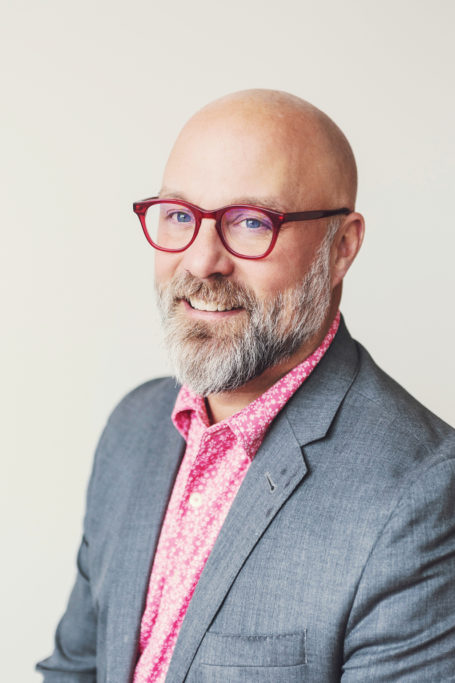Building Business for Others to Grow Your Success
Photography as noted
Financial superstar Eszylfie Taylor explains how helping others grow their businesses can be a great way to grow your own.
Not everyone is lucky enough to find their calling, but Eszylfie Taylor always knew he wanted to do something on a grand scale. After graduating college, he joined New York Life Insurance Company as a financial advisor and immediately took to the industry. In the decades since, he’s become a member of the Million Dollar Round Table, which recognizes the top professionals of the industry, earned the organization’s elite “Top of the Table” status for his production, and founded Taylor Insurance and Financial Services, where he currently serves as president. Says Taylor, “The disheartening thing about other industries is there is no easy way to get to the top—progression is often about seniority. But with these industries, it’s about work ethic and aptitude. I liked that I could write my own script to success.”

A new script for success
Taylor’s outgoing personality and everyday interactions are inextricably woven into his work. In fact, this skill of building relationships is an integral part of the strategy he created, called the Taylor Method, which hinges on the idea that finding business not only for yourself but also for other business owners is the key to creating opportunities and growth.
“I don’t sell products—I solve problems,” Taylor says. “If I have an hour-long meeting, fifty minutes of it is me asking questions and ten minutes is problem-solving at the end.” He is realistic about the fallibility of sales, admitting that there will never be a perfect product. But he doesn’t need the product to be perfect—he just needs it to be better than what you have. As he explains, if you are drowning in the middle of the ocean and someone offers you a life preserver, you aren’t going to care if it’s yellow, orange, or polka-dot. And that’s the script Taylor follows. He tells those learning the Taylor Method to focus less on the product and more on the client’s problems. He analogizes, “Rather than sell a hammer, I’m going to sell the fact that you have a hole in your wall.”
His legacy
Taylor loves kids (he has daughters of his own) and takes great pride in his nonprofit Future Stars Basketball Camp. He is also involved with March of Dimes and the Ronald McDonald House. He meets people in the community through organizations and causes that he truly believes in.
Taylor’s motivation comes from true engagement, not money. The way he sees it, you have a duty when you are given money. He says, “It’s your responsibility to be a blessing to other people. I am here to help and serve; I think every day about the impact I can have, the jobs I can create, and the education and love I can spread. I want to equip others with the tips and tools that I wish someone had given me and to illuminate the path for others.”
The four pillars
The Taylor Method is the culmination of Taylor’s career triumphs and failures. With over 20,000 client meetings under his belt, he’s taken all the skills that were innate and all the things he did wrong and created an objection-free sales process anyone can use.
The approach
The best clients are the ones who stay. And that doesn’t happen overnight; you must cultivate trust and rapport. Become a pro at this by authentically engaging with people through networking, personal interactions, referrals, and centers of influence. If someone says no to what you are selling, it doesn’t mean you have a bad product. Instead, take it as a cue that the relationship is not strong enough yet. Think about what you can do to create a better bond with that person. Maybe it’s inviting them over for dinner, showing up at an event they have planned, or taking an interest in a cause that is meaningful to them.
Taylor encourages a concept he calls “tactful persistence.” If you want to land clients, you must be willing to keep engaging and connecting. There is a certain amount of hustle that differentiates the top sellers from everyone else.
The fact find
The first step in building relationships is learning who someone is. What are their interests? What does their life look like? What keeps them up at night? Friendships are a two-way street, so be willing to share and be vulnerable as well. As you create trust, you can begin asking deeper questions that will reveal the problems they need solved.
The opportunity
What you do with the fact-finding is the key to conquering this next pillar. As you are going through the fact-finding session and hearing what issues potential clients need help with, you will discover opportunities to connect them with other people and businesses in your network. If you are too focused on your own business, you will miss out on these openings to make referrals and create goodwill for the community. But if you understand that people are multifaceted with problems outside of your expertise, this is your chance to shine. Now your clients see you as someone who wants to help them rather than someone who only wants their business. And the people getting referrals may be motivated to tell their own circle about you to create a reciprocal relationship.
The close
If the other three pillars are there and a relationship has been forged, the deal should be more of a foregone conclusion than a hard sell. The trust has been developed and the issues revealed, making the close the logical solution. This is often referred to as an assumptive or presumptive close, where you use affirming language rather than asking if they are ready to buy. Examples of this would be inquiring about payment details and what delivery date they would like.
Setting the table
Before you can use the pillars of the Taylor Method, you need to set up a meeting with the potential client. And to do that well, Taylor says you must set the table. Be up front about why you want a meeting rather than tiptoe around it because you are afraid of rejection. You should also be mindful of others’ time and show you can honor it. Ask how much time they have, and then condense your pitch into that time frame.
Detaching from the outcome
Taylor estimates that he reaches out to seventy-five to one hundred people a day and hears a “no” or “not now” from sixty to seventy of them. But he continues to persevere because he knows it’s a numbers game and not personal. The important thing is to prioritize process over outcome.
Taylor recounts the story of a new advisor who joined the firm seven years ago. While he was doing all the right things—following the process, setting appointments, making the calls, and doing the fact-finding—he had made very little money in his first few months. He apologized to Taylor for what he perceived as a failure to perform, but Taylor encouraged him to continue doing what he had been doing. By the end of his first year, he had made $150,000 and continued to increase year over year. Says Taylor, “He was looking at the outcome, and I was looking at the process. So many times, we want instant results. It’s not what you do today; it’s what you do day in and day out, week in and week out. Successful people are stubborn with a purpose.”
Work smarter, not harder
Though it takes the same amount of time to fill out paperwork and go through the process regardless of the client, you are only ever going to make as much money as your clients make. So if you are working in more modest markets, people likely have a lot less discretionary income, and when money gets tight, the new plan they bought from you will be the first thing to go. Working with people in a higher income bracket will often be less challenging and more profitable. “I always ask other salespeople to think of the five most nerve-wracking and difficult deals they’ve worked on in the past year and then the most enjoyable,” he reveals. “The five hardest will inevitably be among the smallest. It’s easier to make a million dollars than it is to make $50,000.” Additionally, he finds that some of the most successful people have the worst planning because they are so busy focusing on what they are great at. Everything gets pushed to the back burner.
Be yourself
Authenticity serves as the cornerstone for meaningful interactions. Expressing genuine interest in someone else, showing vulnerability, and maintaining transparency in communication are all ways to build strong and sustainable relationships. The more bonds you make, the bigger your circle of influence becomes. And if they are authentic connections, it means more people advocating on your behalf and referring business to you.
TAKE ACTION:
Take stock of any opportunities you may be missing to build relationships and trust within your community.


















